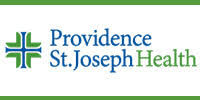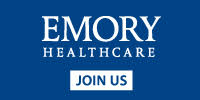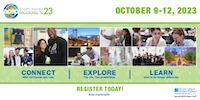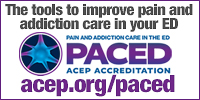- December 1,2016 | ISSN 1940-6967
- The National Association Of Medical Doctors
Featured Sponsors
Interesting Statistics On Physicians Under 45 Years Old

By Laura Dyrda
Young physicians entering medical practice today look very different than their counterparts 30 years ago; they were brought up in the digital age and entered medicine during a time of immense consolidation in the healthcare space.
These statistics describe where young surgeons are beginning their practices as well as their financial profile, work schedule personal life and more.
Practice setting
The following statistics include percentages of young physicians in each practice setting, a breakdown of practice setting by specialty and where young physicians plan to take their practice in the future.
Current situation
1. Employed physicians: 79 percent (1)
2. Hospital employed physicians: 28 percent
3. Large medical group employed physicians: 24 percent
4. Small practice physicians: 18 percent
5. Mid-size practice: 11 percent
6. Medical school: 11 percent
7. Solo practice: 3 percent
8. The specialty breakdown of young physicians:
• Pediatrics: 17 percent
• Internal medicine: 16 percent
• Family medicine: 12 percent
• Anesthesiology: 7 percent
• Obstetrics and gynecology: 6 percent
• Emergency medicine: 5 percent
• Psychiatry: 5 percent
• Radiology: 3 percent
• General surgery: 3 percent
• Ophthalmology: 2 percent
• Hematology/oncology: 2 percent
• Cardiovascular disease: 2 percent
• Orthopedic surgery: 1 percent
• Dermatology: 1 percent
Another 18 percent reported "other" as their specialty.
9. Wish to continue practicing as they do now: 67 percent
10. Feel hospital employment is a positive trend to increase quality and decrease costs: 44.9 percent (2)
Future plans (could select all that apply)
11. Start or buy into private practice at some point in the future: 19 percent (1)
12. Change employers: 30 percent
13. Buy/lease medical equipment: 10 percent
14. Buy a medical practice: 4 percent
15. Transition to concierge practice: 2 percent
16. Leave the practice of medicine: 5 percent
Financial profile
The following statistics include data on young physicians' current financial situations, goals for the future, retirement savings, debt, insurance, compensation and net worth.
17. The top financial goals for young physicians are, in order: (1)
• Provide comfortable retirement for myself/my spouse/my partner
• Provide education funding for my children and grandchildren
• Fund long-term health needs for myself/spouse/partner
18. Have less than $25,000 in funds: 25 percent
19. Earn more than 75 percent of their family's total income: 57 percent
20. Earn around 50 percent of the family's total income: 16 percent
21. Have an updated will: 24 percent
22. Has an estate tax plan: 10 percent
23. Don't have an estate plan: 68 percent
24. Have power of attorney: 23 percent
25. Have an emergency fund: 69 percent
26. Are currently renting their homes: 31 percent
27. Plan to purchase or remodel a primary home: 49 percent
28. Plan to buy a second home or vacation home: 6 percent
Retirement savings
29. Ahead of schedule for retirement savings: 7 percent
30. On track for retirement savings: 50 percent
31. Behind where they want to be for retirement savings: 43 percent
32. Less than $100,000 saved for retirement: 36 percent
33. Savings for retirement is $100,000 to $500,000: 45 percent
34. Have a 401(k): 74 percent
35. Have a Roth IRA: 49 percent
36. Have a traditional IRA: 33 percent
Debt
37. Debt and expenses breakdown (could select all that apply): (3)
• Have a mortgage on primary residence: 57 percent
• Are paying off college or medical school loans: 57 percent
• Make car loan payments: 43 percent
• Are paying off loans for significant others: 25 percent
• Pay private school tuition for child/children: 14 percent
• Pay a mortgage on second home: 8 percent
38. Medical school debt $50,000 or less: 13 percent (1)
39. Medical school debt $100,000 to $150,000: 24 percent
40. Medical school debt more than $200,000: 23 percent
41. Took one to five years to pay off medical school debt: 11 percent
Insurance
42. Have malpractice insurance: 93 percent
43. Have disability insurance: 72 percent
44. Have life insurance: 70 percent
45. Have maternity/paternity leave (short term disability): 49 percent
46. Have disability insurance premiums paid by employer: 48 percent
Compensation and net worth
47. The highest compensating specialty for young physicians is orthopedics. Here is the breakdown of average compensation for the top five compensating specialties: (3)
• Orthopedics: $329,000
• Dermatology: $312,000
• Anesthesiology: $309,000
• Cardiology: $307,000
• Gastroenterology: $294,000
48. Compensation for self-employed surgeons: $294,000
49. Compensation for employed surgeons: $195,000
50. Average compensation for all physicians by region of the country:
• South Central: $247,000
• Southeast: $246,000
• North Central: $245,000
• West: $236,000
• Northwest: $233,000
• Great Lakes: $226,000
• Southwest: $220,000
• Mid-Atlantic: $214,000
• Northeast: $201,000
51. Net worth under $500,000: 72 percent
52. Net worth $500,000 to $999,999: 18 percent
53. Feel competitive with other physicians about wealth: 12 percent
Work schedule
The following statistics include hours worked and how young physicians spend their time, if they see Medicare and Medicaid patients and whether they practice at capacity.
Hours worked
54. Work 40 to 50 hours per week: 40 percent (1)
55. Work 51 to 60 hours per week: 25 percent
56. Work 61 to 80 hours per week: 22 percent
57. Hours per week spent seeing patients: (3)
• Less than 30: 11 percent
• 30 hours to 45 hours: 53 percent
• 46 hours to 55 hours: 18 percent
58. Time spent with each patient per patient:
• Nine minutes to 12 minutes: 23 percent
• 13 minutes to 16 minutes: 29 percent
• 17 minutes to 20 minutes: 21 percent
59. Time spent on administration per week:
• Five hours to nine hours: 25 percent
• 10 hours to 14 hours: 29 percent
• 15 hours to 19 hours: 13 percent
60. Would prefer to work more hours per week: 3 percent (1)
61. Would prefer to work fewer hours per week: 47 percent
62. Happy with current schedule: 37 percent
63. Works days only: 70 percent
64. Works a combination of day and night shifts: 28 percent
65. Works nights only: 1 percent
66. Plans to cut back hours in the next three years: 18.1 percent (2)
67. Plans to seek a nonclinical job within healthcare in the next three years: 15.2 percent
68. Practices at full capacity: 54 percent
69. Feels overextended and overworked: 27.8 percent
70. Has time to see more patients/assume more duties: 18.2 percent
71. Feels time with patients is always limited: 15.8 percent
72. Has all the time needed to provide highest standard of care: 10 percent
Medicare/Medicaid patients
73. Sees all Medicare patients who seek care at their practice: 73.5 percent (2)
74. Sees all Medicaid patients who seek care at their practice: 69.6 percent
75. Sees no Medicare patients: 11.6 percent
76. Sees no Medicaid patients: 10.1 percent
Professional profile
The following statistics include information about how young physicians feel about the state of medicine as well as their participation and familiarity with new payment models. The section also addresses physician burnout and medical association participation.
Feelings about the profession
77. Optimistic about the current state of the medical profession: 57 percent
78. Optimistic about the future of the medical profession: 45.9 percent
79. Most satisfying factors about medical practice (respondents picked two):
• Patient relationships: 67.5 percent
• Intellectual stimulation: 56.5 percent
• Social/community impact: 21.3 percent
• Financial rewards: 18.4 percent
• Prestige of medicine: 12.7 percent
80. The factors least satisfying about medical practice (respondents picked two):
• Regulatory/paperwork burden: 59.9 percent
• Professional liability concerns: 31.6 percent
• Erosion of clinical autonomy: 27.5 percent
• Commoditization of medicine: 20.6 percent
• Inefficient EHR design/interoperability: 18 percent
81. Feels medical burnout sometimes or often: 59.3 percent
82. Would choose medicine as a career again: 60 percent (3)
83. Would choose the same specialty again: 45 percent
84. Would choose the same practice setting again: 25 percent
New payment models
85. Familiar with the Medicare Accountability and CHIP Reauthorization Act: 15.5 percent (2)
86. Participates in Physician Quality Reporting System: 54.7 percent
87. Participates in meaningful use: 68.7 percent
88. Participates in patient satisfaction surveys: 78.3 percent
89. Participates in ACOs: 39.3 percent
90. Participates in bundled payments: 33.9 percent
91. Participates in insurance products through state/federal marketplace exchanges: 36.7 percent
92. Would grade the ACA as a vehicle for healthcare reform at an A or B: 28.9 percent
93. Compensation tied to quality metrics: 43.9 percent
94. Will be able to meet CMS' goal of 30 percent of Medicare payments tied to quality by the end of 2016: 31.3 percent
95. Will not be able to meet CMS' goal of 30 percent of Medicare payments tied to quality by the end of 2016: 13.5 percent
96. Feels EHRs have improved practice:
• Quality of care: 39.8 percent
• Efficiency: 36.6 percent
• Interaction: 17.4 percent
97. Feels EHRs have reduced practice:
• Quality of care: 22.3 percent
• Efficiency: 42.2 percent
• Interaction: 51.8 percent
98. Plans to drop new or existing Medicare and Medicaid patients: 6 percent (3)
99. Regularly discuss costs with patients: 26 percent
Association participation
100. Part of the state medical society: 57.4 percent (2)
101. Member of a national specialty society: 73.8 percent
102. Member of the American Medical Association: 31 percent
103. Member of the American Osteopathic Association: 10.1 percent
Personal profile
This section includes statistics about young physicians' personal relationships, families and favorite activities.
104. Currently are married: 76 percent (1)
105. Currently are single: 15 percent
106. Currently are unmarried with a partner: 5 percent
107. Currently divorced: 2 percent
108. Plan to get married: 10 percent
109. Have children living at home: 60 percent
110. Plan to have children: 45 percent
111. The favorite activities among young physicians are:
• Running/jogging: 50 percent
• Bicycling: 25 percent
• Camping/hiking: 24 percent
• Aerobic dance: 15 percent
• Snow skiing: 14 percent
112. The favorite hobbies for young physicians are:
• Book reading: 52 percent
• Home decorating/furnishing: 19 percent
• Home workshop/do-it-yourself: 18 percent
• Vegetable gardening: 16 percent
• Yoga/Pilates: 15 percent
• Bible/devotional reading: 15 percent
Articles in this issue:
- This Doctor Quit Medicine. It Saved Her Life.
- The Simple Question That Could Save The Lives Of Physicians
- Why We Should Care About Physician Debt
- Texas Hospital Abruptly Closes After Failing To Make Payroll
- 4,800+ Physicians Reject AMA's Endorsement Of Tom Price For HHS
- Interesting Statistics On Physicians Under 45 Years Old
- Highest Paying Hourly Salaries, From Lawyers To Doctors
Top Physician Opportunities
Journal of Medicine Sign Up
Get the Journal of Medicine delivered to your inbox.
In This Issue
- This Doctor Quit Medicine. It Saved Her Life.
- The Simple Question That Could Save The Lives Of Physicians
- Why We Should Care About Physician Debt
- Texas Hospital Abruptly Closes After Failing To Make Payroll
- 4,800+ Physicians Reject AMA's Endorsement Of Tom Price For HHS
- Interesting Statistics On Physicians Under 45 Years Old
- Highest Paying Hourly Salaries, From Lawyers To Doctors
Archives
- June 1, 2025
- May 15, 2025
- May 1, 2025
- April 15, 2025
- April 1, 2025
- March 15, 2025
- March 1, 2025
- February 15, 2025
- February 1, 2025
- January 15, 2025
- January 1, 2025
- December 15, 2024
- December 1, 2024
- November 15, 2024
- November 1, 2024
- October 15, 2024
- October 1, 2024
- September 15, 2024
- September 1, 2024
Masthead
-
- Editor-in Chief:
- Theodore Massey
- Editor:
- Robert Sokonow
- Editorial Staff:
- Musaba Dekau
Lin Takahashi
Thomas Levine
Cynthia Casteneda Avina
Ronald Harvinger
Lisa Andonis
Leave a Comment
Please keep in mind that all comments are moderated. Please do not use a spam keyword or a domain as your name, or else it will be deleted. Let's have a personal and meaningful conversation instead. Thanks for your comments!















*This site is protected by reCAPTCHA and the Google Privacy Policy and Terms of Service apply.